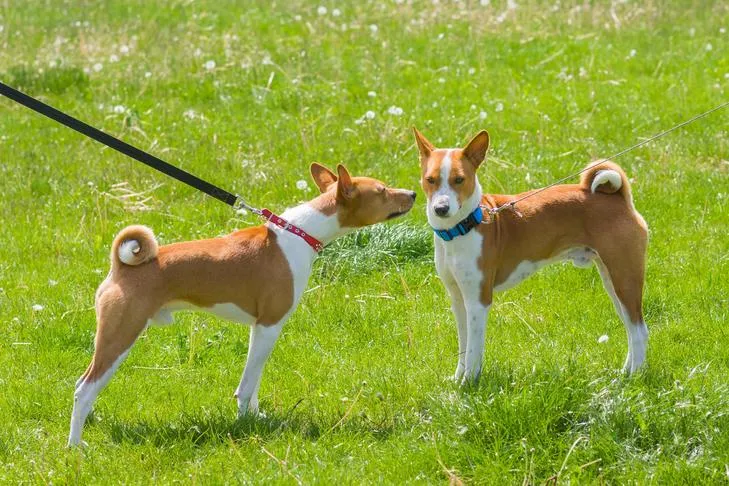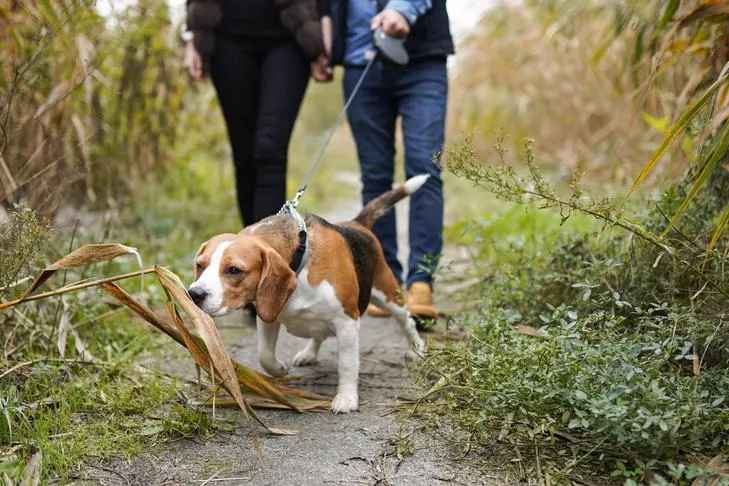Leash pulling is a common frustration for dog owners, turning enjoyable walks into a tug-of-war. It’s not just about an unpleasant experience; uncontrolled pulling can pose safety risks for both you and your dog. Keeping your dog leashed in public areas is often a legal requirement and ensures you have better control over their interactions and environment. But how do you transition from being dragged down the street to a harmonious walk? This guide offers proven strategies to teach your dog polite leash manners, helping you and your canine companion walk together, not against each other.
One of the most effective approaches to curb leash pulling involves a consistent application of positive reinforcement. It’s crucial to never take good behavior for granted, and this applies directly to your dog walking nicely beside you. Remember that dogs repeat behaviors that are rewarding, whether that reward is a delicious treat, enthusiastic praise, or the opportunity to investigate an interesting scent. If your focus is solely on correcting unwanted actions and you overlook their good behavior, your dog may revert to less desirable methods to achieve their goals.
Always Reward Good Leash Behavior
Consistently acknowledge and reward your dog when they are walking politely on the leash. Carry high-value treats on your walks or be prepared with affectionate pets and encouraging words. Don’t be hesitant to reward them; let your dog know you value their chosen behavior. Initially, provide frequent and generous rewards. As your dog’s skills develop, you can gradually reduce the reliance on treats and instead offer opportunities for enjoyable activities like sniffing a tree or greeting another dog as a reward.
Never Let Your Dog Walk When They Are Pulling
Your dog pulls because they are eager to move forward. If you allow them to walk while pulling, you are inadvertently rewarding the very behavior you wish to extinguish. This reinforcement will only exacerbate leash pulling in the long run. Therefore, it’s essential to stop all forward movement the moment your dog pulls on the leash. Plant your feet firmly and wait patiently until your dog either returns to your side or the tension on the leash slackens.
 Two Basenji dogs interacting in an open field, one wearing a leash.
Two Basenji dogs interacting in an open field, one wearing a leash.
Wait for a Loose Leash Before You Walk
When you halt your progress due to your dog pulling, the key is to know when to resume walking. Wait for a slack leash, which should form a gentle J-shape, and for your dog to redirect their attention back to you. This might require some patience initially, but eventually, your dog will look back to see what’s causing the stop. At that precise moment, offer praise and a treat by your side, then continue your walk. You may need to stop and start frequently at first, but your dog will soon grasp that pulling halts the walk, while polite walking allows it to proceed.
Incorporate Life Rewards on Your Walk
Walks are meant to be enriching experiences for your dog, offering more than just a chance for them to relieve themselves. They should provide both physical exercise and mental stimulation. However, when you’re actively training your dog to stop pulling, it can feel like these benefits are sidelined. One effective way to enhance your training and enrich your dog’s walks is by incorporating “life rewards” for their good behavior. These are everyday activities your dog enjoys, such as the opportunity to sniff a bush or greet a friendly passerby. For instance, if your dog walks ten feet without pulling, allow them a few minutes to explore and sniff. These bonus rewards will powerfully reinforce the benefit of walking politely. This approach can be a key part of how to get dog from pulling on leash.
Walk at a Good Pace
Often, human walking speeds are too leisurely for dogs. Even smaller breeds can move their legs much faster than we might expect. This discrepancy in pace is a significant reason dogs pull – they simply want to move faster. To foster greater engagement during your walks, find a pace that is comfortable for both of you. While you can certainly train your dog to match your speed, adopting a brisker pace during training can make it easier for them to learn to refrain from leash pulling.
Be Consistent With Your No-Pulling Rule
It can be tempting to permit your dog to pull when you’re short on time or facing unfavorable weather. However, consistency with your no-pulling rule is paramount, irrespective of the circumstances. Any instance where you allow your dog to pull will effectively reset your training progress. Until your dog can walk a reasonable distance without pulling, allow them to relieve themselves in the yard or at the curb, and save your training walks for when you have ample time.
 A Beagle dog on a leash, pulling forward to sniff the ground during an outdoor walk.
A Beagle dog on a leash, pulling forward to sniff the ground during an outdoor walk.
Keep Training Sessions Short and Fun
Working with a dog that is determined to pull can be frustrating. In the initial stages, you might only manage to walk a few feet from your doorstep. Instead of pushing your dog to the point where both of you become disheartened by a lack of progress, keep your training sessions brief and positive. Puppies, in particular, have short attention spans, and demanding too much too soon will not yield the desired results. Remember, your objective isn’t to cover a specific distance, but rather to achieve a loose-leash walk, even if it’s just to your neighbor’s house. Exploring strategies for how to get your dog to stop pulling the leash can be integrated into these short sessions.
Be Interesting and Engaging on Walks
The world presents an endless array of stimulating sights, sounds, and especially smells for dogs, creating numerous distractions that can entice them to pull you along the sidewalk. If you’re preoccupied with your phone or otherwise disengaged from your dog, there’s little incentive for them to pay attention to you. However, if you make yourself an engaging and captivating companion, your dog will be far more inclined to follow your lead. Converse with your dog, incorporate brief training exercises, pause for a quick game, and so on, ensuring your dog is always anticipating your next move.
Stay Calm
Whether it’s spotting a familiar neighbor or encountering a barking dog, walks can present many emotionally charged situations. Regardless of whether the situation is exciting or frightening for your dog (and you), it is imperative that you manage your own emotions. Dogs are exceptionally adept at interpreting human emotions, so your emotional state can transfer through the leash, further escalating your dog’s excitement or intensifying their anxiety. To help your dog remain calm, maintain your own composure and demonstrate that there is no cause for alarm. The more relaxed your dog is, the more receptive they will be to your guidance and the better they will behave.
Engage Your Dog In Distracting Situations
When faced with distractions like other dogs or squirrels, it’s easy for your dog to forget their training and revert to leash pulling. The same applies to things your dog finds unsettling. Perhaps strangers make your dog nervous. Your dog might pull to approach them or pull away in the opposite direction. In either scenario, leash manners can be easily discarded.
To help your dog navigate distractions effectively, focus their attention back on you. Calmly offer treats or engage them in a game. For instance, ask for a sit or a hand target. These exercises are simple for your dog to perform and will keep them focused as the distraction passes. You can also teach your dog to make eye contact with you using the “watch me” cue to manage where they are looking. Crucially, be proactive. Capture your dog’s attention before they notice the distraction, and ideally, they won’t even perceive it. The best way to get dog to stop pulling on leash often involves proactive management of their environment and focus.
If you require expert advice from experienced trainers or have further questions regarding dog training, please visit the AKC GoodDog! Helpline page for an online chat or to register for the program.
The AKC GoodDog! Helpline is celebrating a decade of supporting dog owners. If you need assistance, experts are available by phone or video to address any training questions, from puppy housetraining to behavioral issues in senior dogs. Join the nearly one million dog owners who trust the AKC GoodDog! Helpline. This service can offer valuable insights for owners asking, “how to get my dog to stop pulling leash“.
